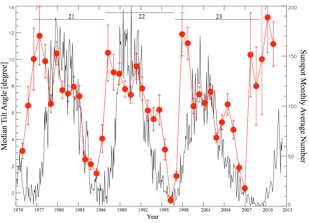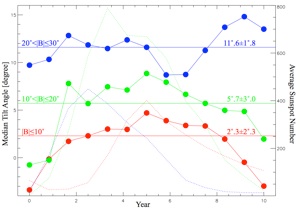Long-Term Measurements of Sunspot Magnetic Tilt Angles

Jing Li (ESS, iPlex, UCLA) and Roger K. Ulrich (P&A, UCLA)

Data
The data used in this study consist of sunspot daily records and longitudinal magnetograms. For the period 1974 to 1990, we use the sunspot records made at MWO. From 1991 onward, the sunspot reports were prepared by Space Weather Forecast Center (SWFC) from observations made by MWO and other observatories.
Method
The tilt angle measurements are performed by an automated IDL package which accomplishes the following tasks: (a) locate the sunspots on the magnetograms; (b) determine the centroids of the entire sunspot, positive and negative polarities within each spot; and (c) calculate the tilt angles for each sunspot group. Once the sunspot locations and sizes were initially determined, the automated IDL program runs an iteration of tasks (b) and (c) until the tilt angle converges or stabilizes.
Results









last updated Tue Oct 9 11:08:45 PDT 2012









